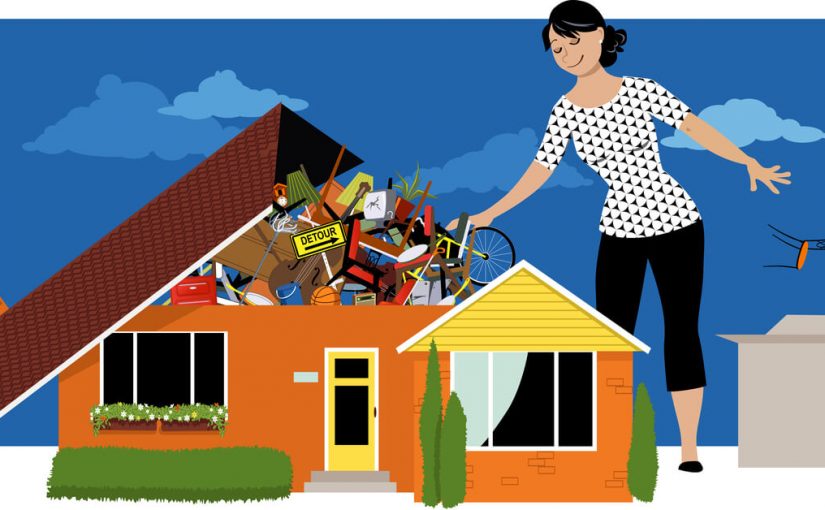(4.5-min read)
The following scenario may sound familiar to many of us. You come home from a long day at work or from driving the kids to their various activities. The home is a wreck. More than untidy, it feels like items have begun to accumulate all over the house over the past several weeks or even months. A feeling of disappointment or even anxiety may flare up inside as you walk through the door. You’re definitely not alone in this feeling. In this piece, we’re going to look at how clutter has been linked to heightened stress as well as how to control your collection of assorted stuff before it controls your emotions.
Clutter Linked To Stress
It may seem like the build-up of clutter in your house is only dangerous if you trip on it in the middle of the night or early morning. We wish this were true, but it isn’t. According to a study by the UCLA’s Center on Everyday Lives of Families (CELF), women who consider their homes to be overly cluttered and filled with unnecessary or misplaced items had higher levels of cortisol — the hormone associated with stress. Extended periods of stress can result in heart conditions, impaired cognitive abilities, and digestive issues. Ever just feel off? Part of the reason could be your cluttered house.
Practical Clutter Reduction Tips
Reducing the amount of clutter in your home isn’t rocket science, but rather just requires being more intentional about the items you bring into your home and what to do with them once they’re there.
- Disregard “might use” items. If you’re holding onto items simply because you “might use” them one day, they’re likely just taking up space in your house as well as your mind. This goes for items that you have already upgraded. That box or drawer full of old phones and random cables likely isn’t helping out your mental state at all.
- Assign places for your things. It sounds overly simplistic, but simply having an assigned spot in your house for your items can take a load off of your mind. This process not only reduces clutter-induced stress but has two other benefits. Firstly, you will always know where this item is when you need it. Secondly, this will gauge whether or not you need to keep this item. If you don’t have space for it, think hard about whether or not you need to keep it.
- Gravitate towards multifunction or multi-use items. Instead of buying an item you will only use once or only has one function, consider purchasing items you can use time and time again as well as items that have multiple functions. This is especially true when it comes to kitchen gadgets, which can quickly clutter kitchen drawers.
- Tidy your garage as though it is another room. It is pretty rare to have a tidy garage as most people simply consider it a space for overflow. If an item has been residing in your garage for years without use, the likelihood that it will be used in the next few years is slim. A tidied garage can have a surprising effect on stress levels and your mental state.
Using Home Design To Reduce Clutter
Organizing and decluttering can greatly help relieve stress you didn’t know you were experiencing. However, in order to make your home less likely to build up clutter in the first place, some elements of custom home design can help.
- Tame clutter with built-in storage. Once you have a good idea of how a space will be used, you can start to design custom storage solutions to organize the necessary items that the room contains. Built-in cabinets can hide unsightly items. Built-in bookshelves can help organize and tame book collections. Built-in display cases can revive the usefulness of cherished items once taking up space in your closet or attic.
- Utilize recessed storage. Bulky cabinets can stick out and make a space feel cramped. However, recessed storage elements flush with a wall can increase the feeling of openness in a living room, kitchen, or even bedroom. Consider recessed built-in storage options when designing or remodeling your home.
- Take advantage of vertical headspace. Most homes today have heightened ceilings. Take advantage of this increased verticle space to store items in higher areas where they are out of your eye-level. Keep the items you need within eye level and easy to access. Less often used items can afford to be kept up higher with a step-stool nearby. If you find yourself needing to store something you rarely use, consider selling, donating, or throwing it away.
For help designing a new home with clutter-reduction built-in, feel free to learn more about and connect with the custom home builder professionals from Perry Hood Properties.



